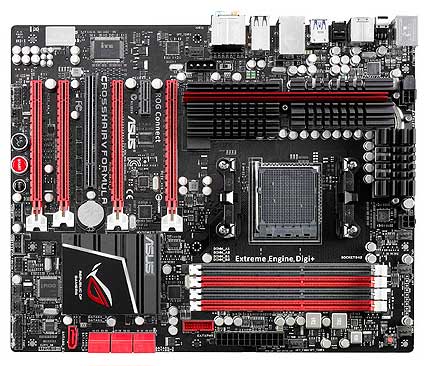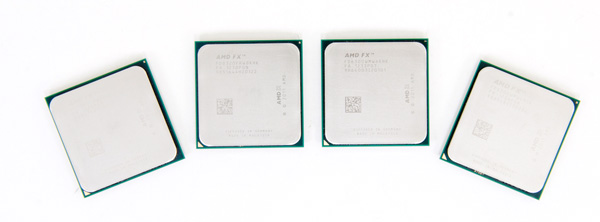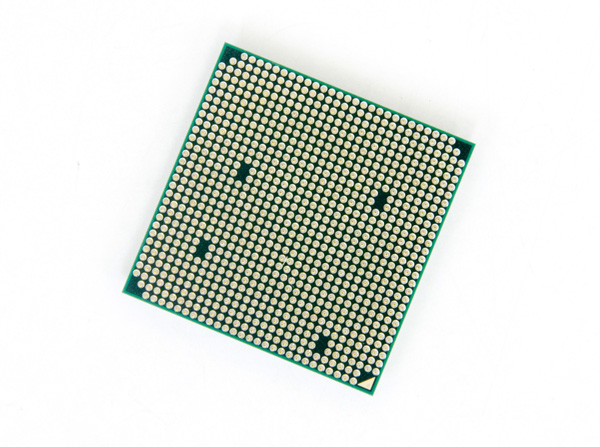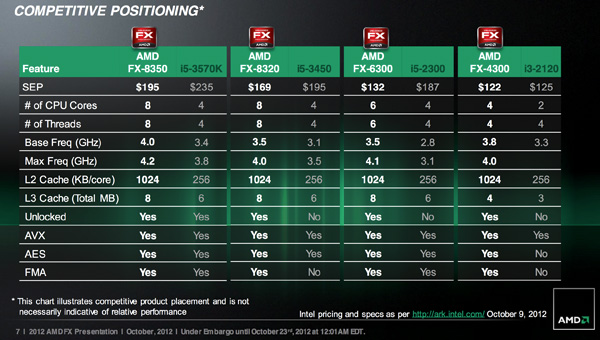The Vishera Review: AMD FX-8350, FX-8320, FX-6300 and FX-4300 Tested
by Anand Lal Shimpi on October 23, 2012 12:00 AM ESTLast year's launch of AMD's FX processors was honestly disappointing. The Bulldozer CPU cores that were bundled into each Zambezi chip were hardly power efficient and in many areas couldn't significantly outperform AMD's previous generation platform. Look beyond the direct AMD comparison and the situation looked even worse. In our conclusion to last year's FX-8150 review I wrote the following:
"Single threaded performance is my biggest concern, and compared to Sandy Bridge there's a good 40-50% advantage the i5 2500K enjoys over the FX-8150. My hope is that future derivatives of the FX processor (perhaps based on Piledriver) will boast much more aggressive Turbo Core frequencies, which would do wonders at eating into that advantage."
The performance advantage that Intel enjoyed at the time was beyond what could be erased by a single generation. To make matters worse, before AMD could rev Bulldozer, Intel already began shipping Ivy Bridge - a part that not only increased performance but decreased power consumption as well. It's been a rough road for AMD over these past few years, but you have to give credit where it's due: we haven't seen AMD executing this consistently in quite a while. As promised we've now had multiple generations of each platform ship from AMD. Brazos had a mild update, Llano paved the way for Trinity which is now shipping, and around a year after Zambezi's launch we have Vishera: the Piledriver based AMD FX successor.
At a high level, Vishera swaps out the Bulldozer cores from Zambezi and replaces them with Piledriver. This is the same CPU core that is used in Trinity, but it's optimized for a very different purpose here in Vishera. While Trinity had to worry about working nicely in a laptop, Vishera is strictly a high-end desktop/workstation part. There's no on-die graphics for starters. Clock speeds and TDPs are also up compared to Trinity.
| CPU Specification Comparison | ||||||||
| CPU | Manufacturing Process | Cores | Transistor Count | Die Size | ||||
| AMD Vishera 8C | 32nm | 8 | 1.2B | 315mm2 | ||||
| AMD Zambezi 8C | 32nm | 8 | 1.2B | 315mm2 | ||||
| Intel Ivy Bridge 4C | 22nm | 4 | 1.4B | 160mm2 | ||||
| Intel Sandy Bridge E (6C) | 32nm | 6 | 2.27B | 435mm2 | ||||
| Intel Sandy Bridge E (4C) | 32nm | 4 | 1.27B | 294mm2 | ||||
| Intel Sandy Bridge 4C | 32nm | 4 | 1.16B | 216mm2 | ||||
| Intel Lynnfield 4C | 45nm | 4 | 774M | 296mm2 | ||||
| Intel Sandy Bridge 2C (GT1) | 32nm | 2 | 504M | 131mm2 | ||||
| Intel Sandy Bridge 2C (GT2) | 32nm | 2 | 624M | 149mm2 | ||||
Vishera is still built on the same 32nm GlobalFoundries SOI process as Zambezi, which means there isn't much room for additional architectural complexity without ballooning die area, and not a whole lot of hope for significantly decreasing power consumption. As a fabless semiconductor manufacturer, AMD is now at GF's mercy when it comes to moving process technology forward. It simply has to make 32nm work for now. Piledriver is a light evolution over Bulldozer, so there's actually no substantial increase in die area compared to the previous generation. Cache sizes remain the same as well, which keeps everything roughly the same. These chips are obviously much larger than Intel's 22nm Ivy Bridge parts, but Intel has a full node advantage there which enables that.
Piledriver is a bit more power efficient than Bulldozer, which enables AMD to drive Vishera's frequency up while remaining in the same thermal envelope as Zambezi. The new lineup is in the table below:
| CPU Specification Comparison | ||||||||||
| Processor | Codename | Cores | Clock Speed | Max Turbo | L2/L3 Cache | TDP | Price | |||
| AMD FX-8350 | Vishera | 8 | 4.0GHz | 4.2GHz | 8MB/8MB | 125W | $199 | |||
| AMD FX-8150 | Zambezi | 8 | 3.6GHz | 4.2GHz | 8MB/8MB | 125W | $183 | |||
| AMD FX-8320 | Vishera | 8 | 3.5GHz | 4.0GHz | 8MB/8MB | 125W | $169 | |||
| AMD FX-8120 | Zambezi | 8 | 3.1GHz | 4.0GHz | 8MB/8MB | 125W | $153 | |||
| AMD FX-6300 | Vishera | 6 | 3.5GHz | 4.1GHz | 6MB/8MB | 95W | $132 | |||
| AMD FX-6100 | Zambezi | 6 | 3.3GHz | 3.9GHz | 6MB/8MB | 95W | $112 | |||
| AMD FX-4300 | Vishera | 4 | 3.8GHz | 4.0GHz | 4MB/4MB | 95W | $122 | |||
| AMD FX-4100 | Zambezi | 4 | 3.6GHz | 3.8GHz | 4MB/4MB | 95W | $101 | |||
The table above says it all. TDPs haven't changed, cache sizes haven't changed and neither have core counts. Across the board Vishera ships at higher base frequencies than the equivalent Zambezi part, but without increasing max turbo frequency (in the case of the 8-core parts). The 6 and 4 core versions get boosts to both sides, without increasing TDP. In our Trinity notebook review I called the new CPU core Bulldozed Tuned. The table above supports that characterization.
It's also important to note that AMD's pricing this time around is far more sensible. While the FX-8150 debuted at $245, the 8350 drops that price to $199 putting it around $40 less than the Core i5 3570K. The chart below shows where AMD expects all of these CPUs to do battle:
AMD's targets are similar to what they were last time: Intel's Core i5 and below. All of the FX processors remain unlocked and ship fully featured with hardware AES acceleration enabled. Most Socket-AM3+ motherboards on the market today should support the new parts with nothing more than a BIOS update. In fact, I used the same ASUS Crosshair V Formula motherboard I used last year (with a much newer BIOS) for today's review:

The Test
For more comparisons be sure to check out our performance database: Bench.
| Motherboard: | ASUS Maximus V Gene (Intel Z77) ASUS Crosshair V Formula (AMD 990FX) |
| Hard Disk: | Intel X25-M SSD (80GB) Crucial RealSSD C300 OCZ Agility 3 (240GB) Samsung SSD 830 (512GB) |
| Memory: | 4 x 4GB G.Skill Ripjaws X DDR3-1600 9-9-9-20 |
| Video Card: | ATI Radeon HD 5870 (Windows 7) NVIDIA GeForce GTX 680 (Windows 8) |
| Desktop Resolution: | 1920 x 1200 |
| OS: | Windows 7 x64/Windows 8 Pro x64 |













250 Comments
View All Comments
wwwcd - Tuesday, October 23, 2012 - link
Yes, we don't neeed of 8 core/threads for gaming today, but do You have prognosis for near future?
Kisper - Tuesday, October 23, 2012 - link
Why would you upgrade for no reason other than speculation?If an advantage arises in heavily threaded games in the future, upgrade at that time. You'll get more processing power / $ spent in the future than you will at present.
CeriseCogburn - Tuesday, October 30, 2012 - link
amd fanboys are pennywise and pound foolish, so buying the amd crap now, and telling everyone it has the deranged amd furuteboy advantage, works for them !I mean really, it sucks so freaking bad, they cannot help themselves, like a crack addict they must have and promote, so heck, the last hope of the loser is telling everyone how bright they are and how on down the line in the imaginary years ahead their current pileofcrap will "truly shine!"
LOL - oh man, funny but so true.
Spunjji - Tuesday, October 23, 2012 - link
Prognosis for the near future is that having that many threads will still not be a whole lot of use for gaming. See Amdahl's law for why.Samus - Tuesday, October 23, 2012 - link
It's safe to say all programs/games going forward will take advantage of four cores or more. Battlefield 3 released LAST year and basically requires 4 cores in order to be GPU-limited (as in the game is CPU limited with just about any videocard unless you have 4 cores.c0d1f1ed - Tuesday, October 23, 2012 - link
Amdahl's Law is not a reason. There is plenty of task parallelism to exploit. The real issue is ROI, and there's two aspects to that. One is that multi-threaded development is freakishly hard. Unlike single-threaded development, you cannot know exactly what each thread is doing at any given time. You need to synchronised to make certain actions deterministic. But even then you can end up with race conditions if you're not careful. The current synchronization methods are just very primitive. Intel will fix that with Haswell. The TSX technology enables hardware lock elision and hardware transactional memory. Both will make the developer's life a lot easier, and also make synchronization more efficient.
The second aspect isn't about the costs but about the gains. It has taken quite a while for more than two cores to become the norm. So it just wasn't worth it for developers to go through all the pain of scalable fine-grained multi-threaded development if the average CPU is still only a dual-core. Haswell's TSX technology will come right in time as quad-core becomes mainstream. Also, Haswell will have phenomenal Hyper-Threading performance thanks to two nearly symmetrical sets of two integer execution units.
AMD needs to implement TSX and AVX2 sooner rather than later to stay in the market.
CeriseCogburn - Tuesday, October 30, 2012 - link
Nice post. Appreciate it.And ouch for amd once again.
surt - Tuesday, October 23, 2012 - link
No, gaming won't need that many threads in the near future either. Nobody is going to make a game demand more than 4 threads because that's what common gamer systems support.AnnihilatorX - Wednesday, October 24, 2012 - link
I disagree. Say we have a hypothetical game that support 8 threads. The overhead of over-threading in a quad core system is frankly, not very much, while it may provide improvements on people with octocore or Intel processors with hyper-threading.AnnihilatorX - Wednesday, October 24, 2012 - link
In fact, there are many games nowadays that split workload into many threads for economic simulation, background AI planning in user phase, physics, audio, graphics subthread, network management, preloading and resources management. It is just that even with the parallelism, there bound to be bottlenecks in single threading that a 8 core may not benefit at all compared to 4 cores.So I disagree, it is not about people not spending resources in making parallelism or not supporting it. It is the nature of the workload that is the determining factor.